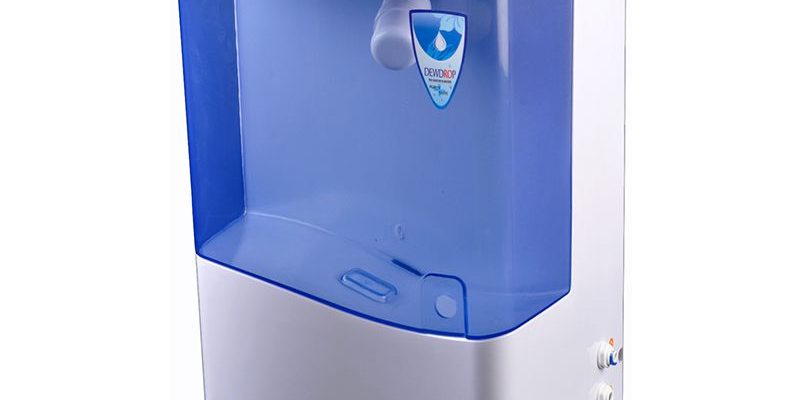Water is a basic need for humans and almost all organisms. Water becomes polluted due to pollution, pesticides, and many other factors. We do not get pure water naturally today. Water has a lot of dissolved solids that cannot be separated by purchasing traditional digestive systems such as lifting and natural filtration. To solve this problem, fortunately, there is some water purifier system. Water purifiers are a must for every family. Best Water purifier system ensure that you get clean and safe drinking water on demand, so you stay away from waterborne diseases. There are different types of water purification processes such as reverse osmosis water filtration, ultrafiltration (UF) and ultraviolet disinfection (UV). Depending on the quality of the water, you need to choose a water purification system. Although we can quickly contact water service professionals if there are any issues, it is always helpful to know how these systems work.
What Is An RO Water Purifier?
Further water purifiers have multistage filters (2 carbon filters and one semipermeable more membrane. Each stage is designed to remove specific contaminants such as arsenic, sodium, copper, lead, and other organic chemicals from the water to make it safe from drinking. RO water purifiers contain semipermeable more membranes that contain capillaries, which are as small as 0.0001 microns in size, which help to dissolve salts and impurities dissolved in water. As salt and heavy metals are removed by semi-membranes, hard water is now softened, making the water sweet and pure.
Why Is RO Water Purifier Required?
The role of the semipermeable membrane in reverse osmosis is vital. This membrane plays a selective role in the sense that it allows some molecules to cross over while limiting them depending on their size. Most homes have screen doors that allow air to pass through but prevent mosquitoes such as flies and mosquitoes. Semipermeable membranes are similar in many aspects. The best quality of semipermeable layers is that it allows for fluid flow in a single direction. This is because of the energy you exert during reverse osmosis.
- Water containing 500 mg / L of TDS (fully dissolved solute) is acceptable according to the Bureau of Indian Standards (BIS), and calcium is adequate in water strength 200 mg / L.
- But when the TDS of 500 mg / L is exceeded, and the amount of magnesium and calcium in the water exceeds 200 ml / L, the water is considered unclean and unhealthy.
- Long-term use of high TDS water can cause additional mineral accumulation in the kidney and may also cause stones in the kidney.
- Higher TDS is bitter and salty, except for the taste of water.
These Are The Types Of Contaminant Filters Used By RO Water Purifier
- Sediment Filter
- Activated Carbon Filter
- RO Membrane
Is RO Water Purifier Good For Health?
RO water purifier such as those mentioned above remove soluble salts and salts from water that is harmful to the human body, but it also removes certain minerals, such as calcium and magnesium, that are beneficial to health. This water purification system ensures removal of fluoride, nitrate, sulfate, sodium, chloride, iron, mercury, zinc, arsenic, lead, cyanide, and other harmful contaminants. However, since these systems are very effective at removing solids from water, they also eliminate the necessary minerals from the sea. To solve this problem, many new water purifiers come with a new type of technology that can hold minerals like potassium, calcium, and magnesium in the water.
Advantages
- RO water purifiers remove harmful dissolved solids and chemicals from the water that cannot be removed by other purification methods.
- RO purifiers have removed harmful germs.
- RO purifiers remove harmful heavy metals such as arsenic, lead, and cadmium.
- WHO (World Health Organization), an international health organization, reviewed the harmful effects of heavy metals on the body. Arsenic intake can cause skin cancer and some other cancers. It can cause skin lesions such as pigmentation changes and hyperkeratosis. Cadmium intake can cause kidney damage, and lead retention also leads to neurotoxic effects. All of the above heavy metals can be further removed by water purifiers.
- RO purifier removes Cryptosporidium that causes diarrheal diseases such as harmful protozoa Cryptosporidiosis.
Conclusion
If you are looking to buy a water purifier for your home, first you need to identify what is TDS for your water. You have to check the TDS (Total dissolved solids) is over 500 ml/L, and the amount of Calcium + Magnesium exceeds 200 ml / L. If water is limited to TDS, you should look for other contaminants such as bacteria, viruses, and other visible impurities and then go for your UV or UF water filter. About 70 to 80{b3b47b4ce3613a8ae866741a21452b80454d4cde38f39b62399bbbfc1a1a9f3e} of the water is wasted or drained during extra water purification, but you can use this water like other cars, such as washing your car and watering plants.


